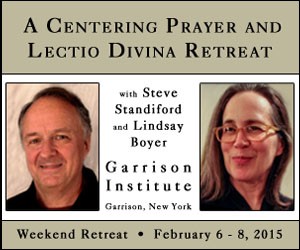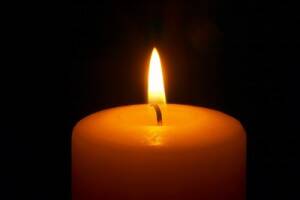A contemplative movement of Christian Centering Prayer is quietly (almost secretly) reviving religious life and faith in society. Here in the land of “the spiritual, but not religious,” and growing numbers of “Nones,” or non-church affiliated, a new form of evangelization is appearing. Centering Prayer is a practice of silent prayer that is a stripped-to-essentials form of Christian monastic contemplation. The current method was developed in the 1970’s by Trappist Father Thomas Keating responding to young pilgrims arriving at his Spencer Massachusetts monastery.
 Today, thousands of individuals and groups participate in the practice under the umbrella of Contemplative Outreach. Various groups sponsor retreats, workshops and publications which help individuals learn of the practice. The simple steps of the method are to choose a sacred word as a symbol of your intention to consent to God’s presence and action within. Then settling comfortably you introduce the sacred word and remain quietly attentive within God’s presence. When distracted from your focus by wandering thoughts, you gently return to the sacred word and openness to God. After a set period of prayer time you remain thankful for a minute or two. Two 20 minute periods a day of practice are recommended, although many have to work up to this standard. This method of directing and sustaining active but receptive openness to God can be extremely challenging for overloaded distracted minds. Repeatedly, a gentle return to God’s presence can be needed—without self-judgment. Yet over time, the meditative experience can become rewarding. It also generates beneficial changes in personality. As one leading practitioner, Lindsay Boyer says, “I have found that God’s presence can often best be invoked with a minimum of God language, or sometimes no language at all. By teaching Centering Prayer I offer the gift of God’s silence, which speaks to the heart.” And seems to convert the mind and will as well.
Today, thousands of individuals and groups participate in the practice under the umbrella of Contemplative Outreach. Various groups sponsor retreats, workshops and publications which help individuals learn of the practice. The simple steps of the method are to choose a sacred word as a symbol of your intention to consent to God’s presence and action within. Then settling comfortably you introduce the sacred word and remain quietly attentive within God’s presence. When distracted from your focus by wandering thoughts, you gently return to the sacred word and openness to God. After a set period of prayer time you remain thankful for a minute or two. Two 20 minute periods a day of practice are recommended, although many have to work up to this standard. This method of directing and sustaining active but receptive openness to God can be extremely challenging for overloaded distracted minds. Repeatedly, a gentle return to God’s presence can be needed—without self-judgment. Yet over time, the meditative experience can become rewarding. It also generates beneficial changes in personality. As one leading practitioner, Lindsay Boyer says, “I have found that God’s presence can often best be invoked with a minimum of God language, or sometimes no language at all. By teaching Centering Prayer I offer the gift of God’s silence, which speaks to the heart.” And seems to convert the mind and will as well.
I too have felt the transformative power of this ancient but new contemplative prayer. Fortunately, or providentially, this approach to prayer has three appealing advantages for this 21st century’s cultural moment.
One. Centering Prayer is a completely lay and democratic movement with no need for hierarchical church oversight. It has been called “A monastery without walls.” Or perhaps the growth of contemplative practice can be likened to the sea of faith’s incoming tide.
Two. Centering prayer is a self-validating practice that experientially changes its practitioners from within over time. Those drowning in babble and trivial distractions find healing in silence.
Three. Centering Prayer and contemplation is non-doctrinaire and ecumenical. It can be seen as related to Buddhist and other valued forms of meditation and mindfulness.
Moreover, on a secular note, I have been intrigued as a psychologist to discover how much the practice of Centering Prayer is affirmed by recent developments in neuropsychological research. Today’s science reveals the power of the brain/mind’s attentional system’s to generate mental and physical wellbeing. Nothing can be as productive for human development as learning to discipline and focus attention. Memory, achievement, and even physical health improve. But on second thought, why should we be surprised that resting in God’s love brings blessings? Those who seek, find. Newman’s words prove true, “Heart Speaks to Heart.”








